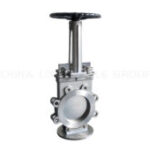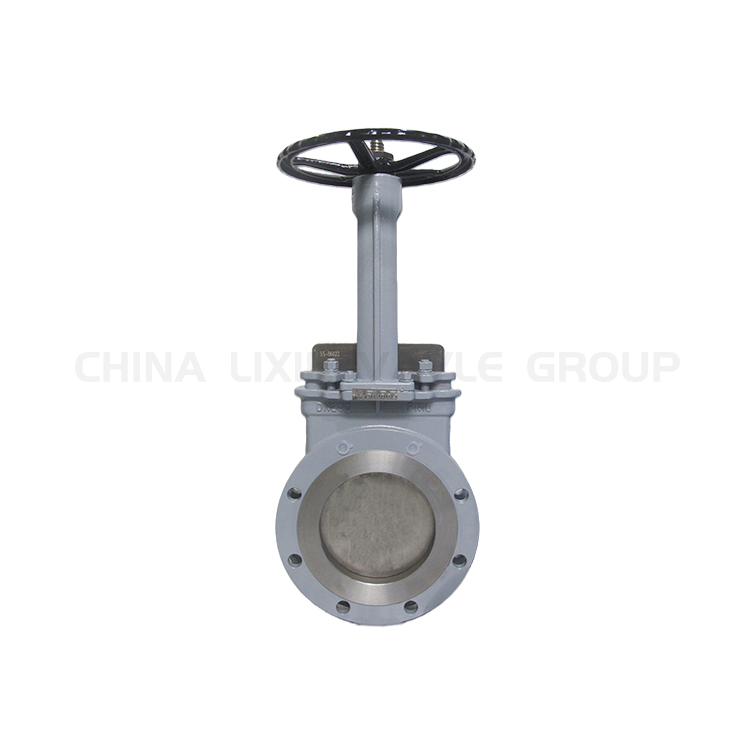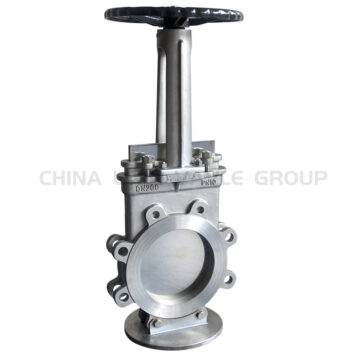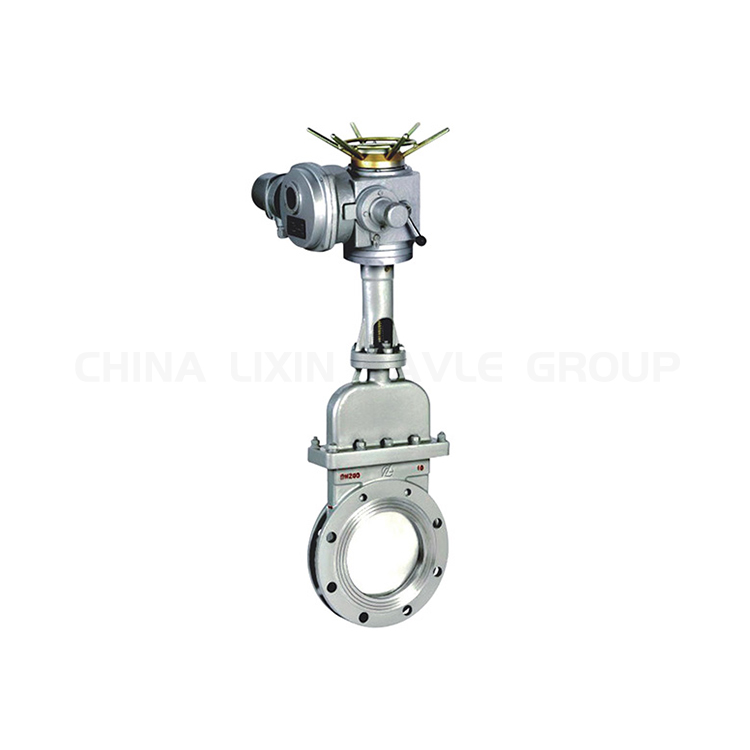The Ultimate Guide to Knife Gate Valves: Everything You Need to Know
Introduction to Knife Gate Valves
Knife gate valves are widely used in various industries because of their powerful functions. In this article, we describe from how they work to benefits, applications, types, selection factors, installation, maintenance, common issues and top manufacturers of knife gate valves. After reading this article, you will have a comprehensive understanding of knife gate valves and be able to choose the valve suitable for your industry according to your own needs.
How Does a Knife Gate Valve Work?
When the knife gate valve is in the open state, the knife plate rises and fluid can enter and exit the pipe through the valve. When the valve needs to be closed, the control mechanism lowers the knife plate so that the knife plate contacts the sealing surface of the valve base, thereby cutting off the fluid in the pipeline. When cutting off the pipeline fluid, an angle is formed between the blade plate and the sealing surface of the valve base, so that the medium is cut off and squeezed out of the valve, thereby achieving the purpose of the valve cutting off the fluid.
The sealing gasket of the knife gate valve usually uses a metal gasket or an elastic material gasket. When the valve is closed, the gasket is squeezed tightly against the sealing surface of the knife plate and valve base to prevent medium leakage. When operating the knife gate valve, manual, electric or pneumatic control methods can be used to open and close the valve.
Because the knife gate valve has a simple working principle and is easy to operate, it can be used to control high-viscosity media and media with particulate matter in pipelines. It has good sealing and wear resistance, so it is widely used in industrial pipeline control. It has also become the first choice in industries such as pulp treatment, wastewater treatment, mining, pulp and paper production, and chemical processing.
Advantages of Knife Gate Valves
- The opening and closing of the knife gate valve is relatively labor-saving.
- Can reduce parts wear and require less maintenance.
- Light weight, easy to install and disassemble.
- Long service life can reduce costs.
- The fluid resistance is small, and the sealing surface is less eroded and eroded by the medium.
- The flow direction of the medium is not restricted, and there is no flow disturbance or pressure reduction.
- The gate valve has a simple shape, short structural length, good manufacturing process, and wide application range.
Applications of Knife Gate Valves
Knife gate valves are suitable for many applications. The following are some common areas of application:
- Oil industry: used to shut off extremely viscous fluids such as petroleum and crude oil, thus helping to regulate the flow of this material.
- Water treatment industry: used in water supply, sewage treatment, water supply and drainage systems, etc., to control the cut-off and regulation of water flow.
- Chemical industry: used to cut off or regulate the medium in chemical pipelines to ensure safety and process control.
- Power industry: used in water treatment system, cooling system of power station and thermal power plant to control the flow of water or steam.
- Iron and steel industry: Used in water supply, cooling systems and wastewater treatment systems in the iron and steel smelting process.
- Mining industry: used for controlling fluid media, such as ore slurry, ore leaching solution, etc.
- Construction industry: used in building water supply system, fire fighting system and HVAC system.
The above are just some common application areas, the knife gate valve has a very wide range of applications, according to the specific fluid control needs for different industries.
Types of Knife Gate Valves
The types of knife gate valves are as follows:
- Lug Knife Gate Valve: Simple structure, good sealing, easy operation, long service life and other characteristics. Suitable for high temperature, high pressure, corrosive media and media containing solid particles
- Flange Knife Gate Valve: leak-proof, wear-resistant and durable
- Bonnet Knife Gate Valve: corrosion-resistant, flexible, leak-proof, economical and practical
- Through Conduit Knife Gate Valve: unique design, simple structure, self-cleaning ability
- Lined Knife Gate Valve: Unique blade design for easy maintenance and operation.
When choosing a knife gate valve type, you can consult the valve manufacturer to help you make the most informed choice.
Factors to Consider When Selecting a Knife Gate Valve
Remember the following five considerations when choosing a knife gate valve:
- Operating conditions: Under specified parameters, the valve can operate safely because of the fluid’s pressure, temperature, and flow rate.
- Fluid characteristics: The fluid’s type, viscosity, and solids concentration must all be considered. Choice of materials and valve design are affected by this.
- End connection: Depending on the requirements of the pipe system, select the appropriate type of end connection, such as a lug, clamp, or flange connection.
- Sorting out the size of the valve will help prevent problems like cavitation and excessive pressure drop.
- Operating system: Depending on the automation and control level requirements, one of three operating systems is required: pneumatic, electric, or manual.
Installation and Maintenance of Knife Gate Valves
Knife gate valve longevity and efficiency are mostly determined by installation and routine maintenance. Here are some things to think about:
- Installation: To guarantee that the valve is installed correctly, tighten the nuts in line with the manufacturer’s recommendations.
- Periodic Inspection: Regularly check the valve for indications of wear, corrosion, or leaks. and replace any worn-out or broken parts right away.
- The operating portions of the valve will wear down faster and function more smoothly if they are lubricated.
- Operational checks: Test valves regularly to ensure they close tightly and open and close smoothly.
- Frequent Cleaning: To avoid the accumulation of debris or particles that could impair performance, keep pipes and valves clean frequently.
You may increase the lifespan of your knife gate valves and reduce the cost of repairs and downtime by adhering to valve installation and maintenance guidelines.
Common Issues and Troubleshooting Tips for Knife Gate Valves
While knife gate valves are known for their reliability, occasional issues may arise. Here are some common issues and troubleshooting tips:
- To determine the cause of a leak, start by inspecting the valve’s seat for any signs of damage or debris. In cases where such obstructions are found, cleaning or replacing the seat is recommended as an appropriate solution.
- If the valve proves hard to operate, or sticks in the open or closed position, check whether the gate and seat are damaged or clogged by debris. Remove dirt and impurities if necessary.
- If the flow of fluid is causing the clogging problem and this occurs very often, try to analyze what kind of liquid you are dealing with as it may contain solid impurities. In some cases, it is possible that a slurry knife gate valve should be used or regular cleaning would be needed.
- In case the valve is showing an excessive sign of wear and tear, please look at the fluid nature, conditions of operation, and material of construction. It may be necessary to change to a valve which is more durable with increased resistance to wear.
It is important to consult the manufacturer or a valve expert if you encounter any persistent issues with your knife gate valve. They can provide guidance and recommendations for resolving the problem effectively.
Top Manufacturers and Brands of Knife Gate Valves
When it comes to purchasing a knife gate valve, it is crucial to choose a reputable manufacturer known for producing high-quality valves. Some of the top manufacturers and brands in the industry include:
- Lixin Valve: Lixin Valve is a professional industrial valve manufacturer that offers a wide range of knife gate valves suitable for various applications. Their valves are known for their durability, reliability, and excellent performance.
- Weir Minerals: A global leader in the design and manufacture of valves for mining and other industries. Their knife gate valves are designed to withstand abrasive slurries and are very wear-resistant.
- Velan: Well-known in the valve industry for its innovative and high-quality offerings. Their knife gate valves are designed to withstand tough operating conditions while delivering consistent results.
- DeZURIK: A leading manufacturer of valves for water treatment, pulp and paper production, and other uses. Their knife gate valves are designed to tolerate severe fluids while yet providing a tight shut-off.
These are just a few examples of the top manufacturers and brands in the knife gate valve industry. When selecting a manufacturer, consider factors such as product quality, reputation, customer support, and availability of spare parts.
Choosing the Right Knife Gate Valve for Your Needs
Finally, knife gate valves provide a versatile and dependable alternative for controlling fluid flow in a variety of industries. Their distinctive form, tight sealing characteristics, and capacity to handle difficult fluids make them the favored choice for a variety of applications. When choosing a knife gate valve, take into account fluid properties, operating conditions, valve size, end connection, and actuation mechanism. Proper installation, frequent maintenance, and troubleshooting can assist assure peak performance and durability. Finally, choose a renowned manufacturer, such as Lixin Valve, to ensure you get a high-quality valve that fulfills your unique requirements. This definitive guide contains all of the information you need to make an informed decision and choose the best knife gate valve for your application.
Contact Lixin Valve, a professional industrial valve manufacturer, for more information and assistance in selecting the right knife gate valve for your needs!




















